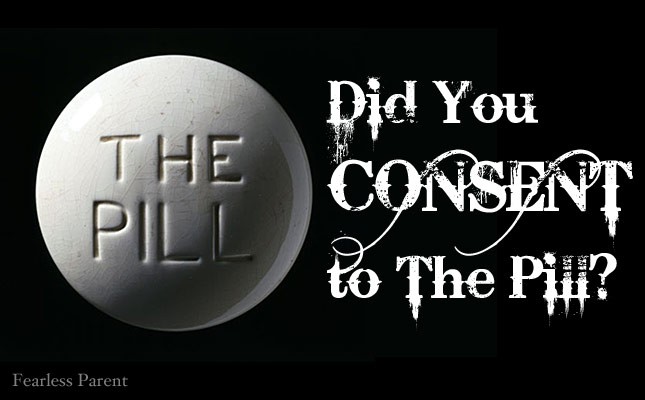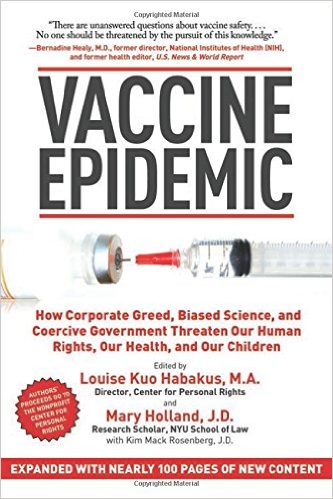As a physician, informed consent means I have an obligation to my patients. I must research and relay what I can about a given intervention’s risks, known and unknown, in the context of the purported benefits, and potential alternatives. The prescription of the pill, which interferes with reproductive hormones, is an example of an egregious lapse in true informed consent.
That naughty little pill
Oral contraceptives confer significant risks to mood, carcinogenesis, and even sudden death. This is in addition to masking potentially reversible pathology — such as PMS, PCOS, and acne. Exploration into underlying mechanisms has revealed that these agents deplete nutrients, cause inflammation, and perturb hormones such as testosterone and thyroid. As I discussed in a previous article:
THYROID, MOOD, AND LIBIDO
Synthetic hormones like those in combined oral contraceptives increase thyroid and sex hormone binding globulin, effectively decreasing the available testosterone and thyroid hormone in circulation. This can render you with nun-like libido, and functionally hypothyroid or depressed, constipated, overweight, mentally cloudy, with dry skin and hair, to boot!
Not exactly what women have in mind when signing up for birth control.
A randomized, open-label, 9 week trial of 3 forms of hormonal contraception found that they all increased SHBG, as well as insulin resistance, and markers of inflammation such as C-reactive protein. Another study suggests that increases in SHBG may persist long after discontinuation of the pill, contributing to sexual dysfunction/low libido.
Incidentally, xenoestrogens, such as PCBs, BPA, and phthalates, as well as poor excretion of estrogen as occurs with gut dysbiosis, can also contribute to elevated SHBG and lead to undesirable states of “estrogen dominance.”
IMMUNE STRESS AND CANCER
The pillpromotes oxidative stress. Stress is often defined as the inability to cope with demands, and oxidative stress is a destructive force in the body perpetuated by reactive oxygen species that outnumber available antioxidant enzymes and factors. Oxidative stress is an important etiologic factor of the pathologic process of Alzheimer’s Disease, Parkison’s Disease, and cancer.
One measure of oxidative stress, lipid peroxidation, was found to be higher in those taking oral contraceptives, and improved (not quite to baseline controls) when they were treated with vitamins E and C, known antioxidants.
NUTRIENT DEPLETION
The pill depletes vitamins, minerals, and antioxidants as measured by activity of Coenzyme Q10, vitamin E, and Total Antioxidant Activity. More specifically, oral contraceptives have been acknowledged to deplete vitamin B6, a cofactor for the production of serotonin and GABA, as well as zinc, selenium, phosphorus, and magnesium demonstrated by this cross-sectional randomized study. Interestingly, birth control use was associated with elevated levels of copper, iron, calcium, and cadmium compared to controls. Copper can upregulate catecholamines, potentially causing feelings of overstimulation. Iron can be a pro-oxidant.
What about OCs and breast cancer risk?
Could oral contraceptives be another way that women are buying into the allure of an oversimplified quick fix that has undisclosed long-term risks?
In a paper entitled “Normal Breast Physiology: The Reasons Hormonal Contraceptives and Induced Abortion Increase Breast-Cancer Risk,” Angela Lanfranchi, MD discusses why and how a woman achieves protective effects through completion of a full-term pregnancy and breast-feeding.
Beginning at five weeks after conception, fetal breast tissue develops, termed the “milk ridge,” over the fifth rib. In an illustration of the complex communication between fetus and mother, the fetus secretes hormones (hCG and hPL) that are responsible for the final maturation of a woman’s breasts into milk-producing lobules.
Over the course of pregnancy, type 1 and 2 lobules increase in density and are meant to evolve into type 3 and 4 lobules. If this does not happen, it may put a woman at increased risk for carcinogenic changes to manifest. If a pregnancy is completed to term, 85% of lobules will be type 4, conferring further breast cancer risk reduction of 10% with each pregnancy.
According to Lanfranchi, induced abortion or preterm birth prior to 32 weeks AND oral contraceptives all increase the predominance of type 1 and 2 lobules. After breastfeeding, and regression back to type 1 lobules, epigenetic changes to tissue persist, representative of long-term benefits.
Growth of estrogen-sensitive tissue through synthetic exposure is one of the ways that birth control sets women up for increased risk. In fact, Lanfranchi states:
“In 2005, the International Agency for Research on Cancer (IARC), part of the UN’s World Health Organization classified hormonal contraceptives as Group 1 carcinogens for breast, cervical, and liver cancers after reviewing the world’s literature on estrogen-progestin combination drugs.”
Informed consent
I support a woman’s right to engage her reproductive capacity at her own discretion. However, medicine’s failure to describe and disclose known risks is essentially a means of disempowerment.
Breast cancer risk, as depicted in this article, is much more complex and both subject to and mitigated by environmental exposures. For instance, this article assumes that receiving a diagnosis of breast cancer is equivalent to actually having it. Unfortunately for millions of women subject to breast cancer overdiagnosis mostly through x-ray mammography breast screenings, this is simply not true.
We now know that over 1.3 million U.S. women were incorrectly diagnosed with breast cancer over the past 30 years. These women were subjected to the unnecessary removal of lumps or entire breasts, as well as to chemical and radiation therapies which themselves carry significant cancer risk. A National Cancer Institute-commissioned expert panel last year acknowledged that ductal carcinoma in situ (DCIS), one of the most prevalent forms of breast cancer diagnosed through mammography screenings, is not cancer, should no longer be called cancer, and should instead be reclassified as a benign lesion of epithelial origin.
***
Without further information on the other co-risks that are engaged and whether the diagnosis was valid, this paper is food for thought. I present a theoretical consideration that there might be more to the story on birth control than we have been led to believe.
Kelly took birth control for 12 years and wishes she had read this article first!













What a terrific article! Thankfully, I have never taken the Pill. It never appealed to me, as I watched my college friends gain 15-25 pounds after they went on it. Freshman 15, my Aunt Fanny–it’s because that’s when the girls go on birth control!
I’d never heard of type 1 and type 2 lobules (or any either kind of lobules) discussed in association with breasts or breast cancer before reading this article, so I looked it up. Interesting!
Here is what I found:
http://www.ncbi.nlm.nih.gov/pmc/articles/PMC2661011/
“Lobules in normal breast tissue can be classified based on their degree of development, which may affect their susceptibility to carcinogenesis; few epidemiologic studies, however, have addressed this.”
http://www.abortionbreastcancer.com/dear_doctor/graphics/
“During a normal pregnancy, women are overexposed to the hormone estrogen (a recognized carcinogen). Estrogen causes breast tissue to grow. It stimulates Types 1 and 2 lobules to multiply. Abortion leaves a woman with more Types 1 and 2 lobules.
Only a third trimester process in pregnancy protects a woman from estrogen overexposure and matures her breast tissue into cancer-resistant, milk producing breast tissue (Types 3 & 4 lobules). A full term pregnancy leaves a woman with an increase in cancer-resistant breast lobules. That’s why women with more children have a lower lifetime risk for the disease.
A woman is the most vulnerable to carcinogens between the time that her menstrual periods begin and her first full term pregnancy occurs. With every menstrual period, estrogen stimulates Types 1 and 2 lobules.”
http://www.bcpinstitute.org/reproductive.htm
“Breast maturity is closely correlated with known reproductive risk factors for breast cancer. The breast is not fully developed at birth. At full development, the breast is comprised of 15- 25 lobes or segments which are in turn comprised of lobules. Lobules in turn are composed of breast cells.
There are 4 types of lobules whose structural differences appear under the microscope.
These lobules represent different stages of development and maturity of breast tissue.
Type 1, 2 & 3 lobules are differentiated by the average number of ductules per lobular unit:
Type 1 has 11; Type 2 has 47; Type 3 has 80.
Type 4 lobules are fully matured and contain colostrum or milk.”
I’ve never heard of ANY of this before. I doubt I’m the only one.